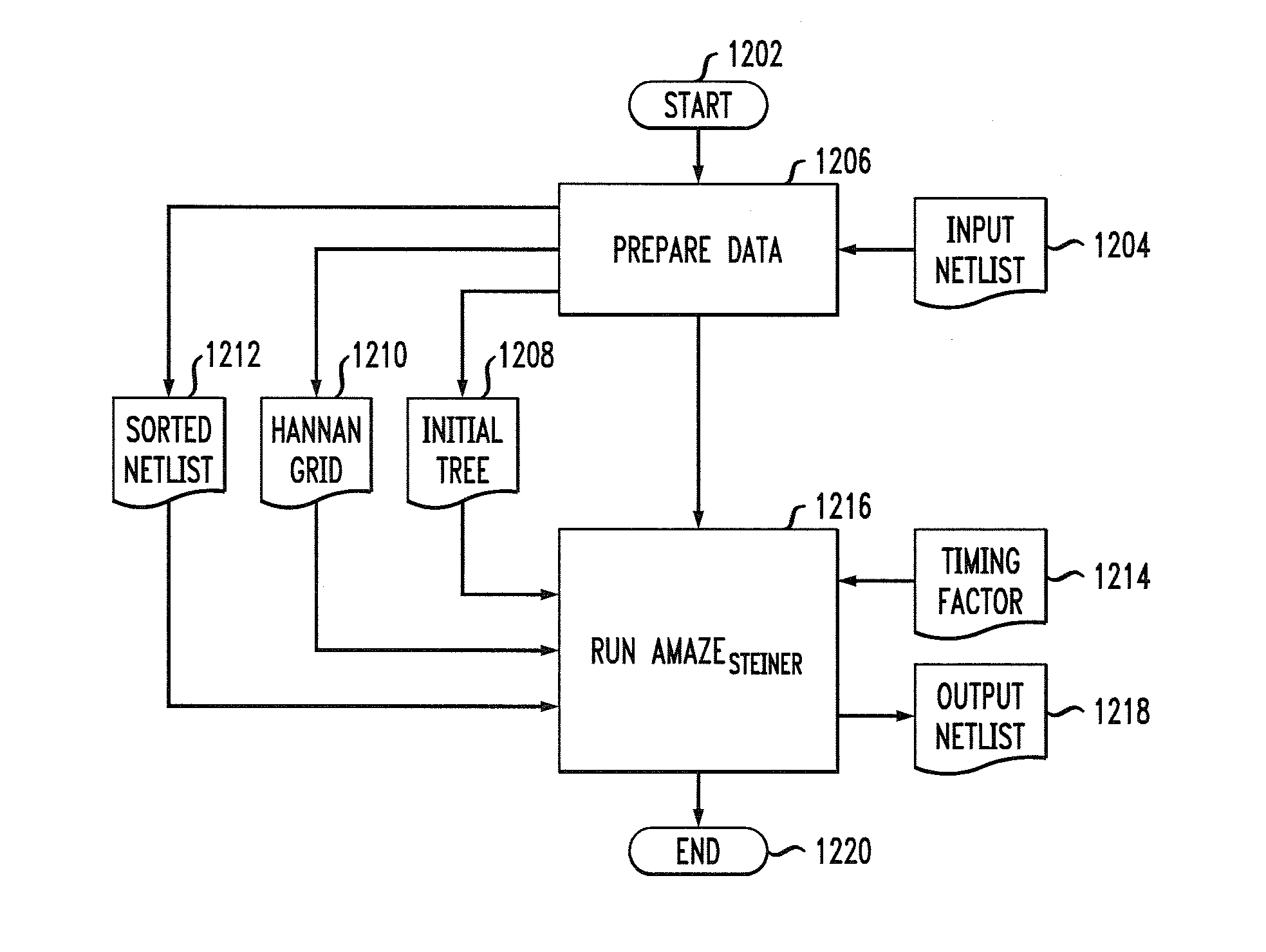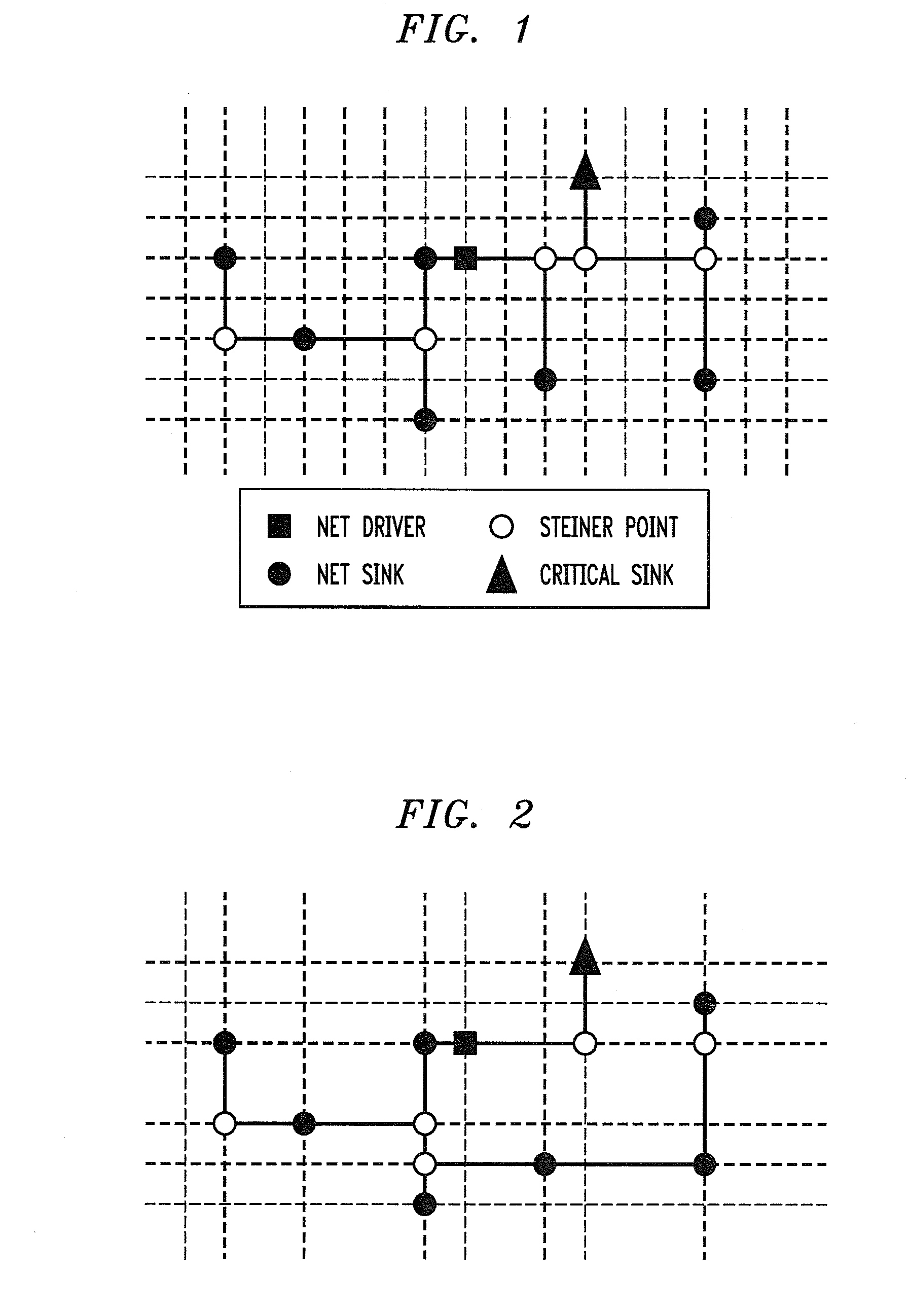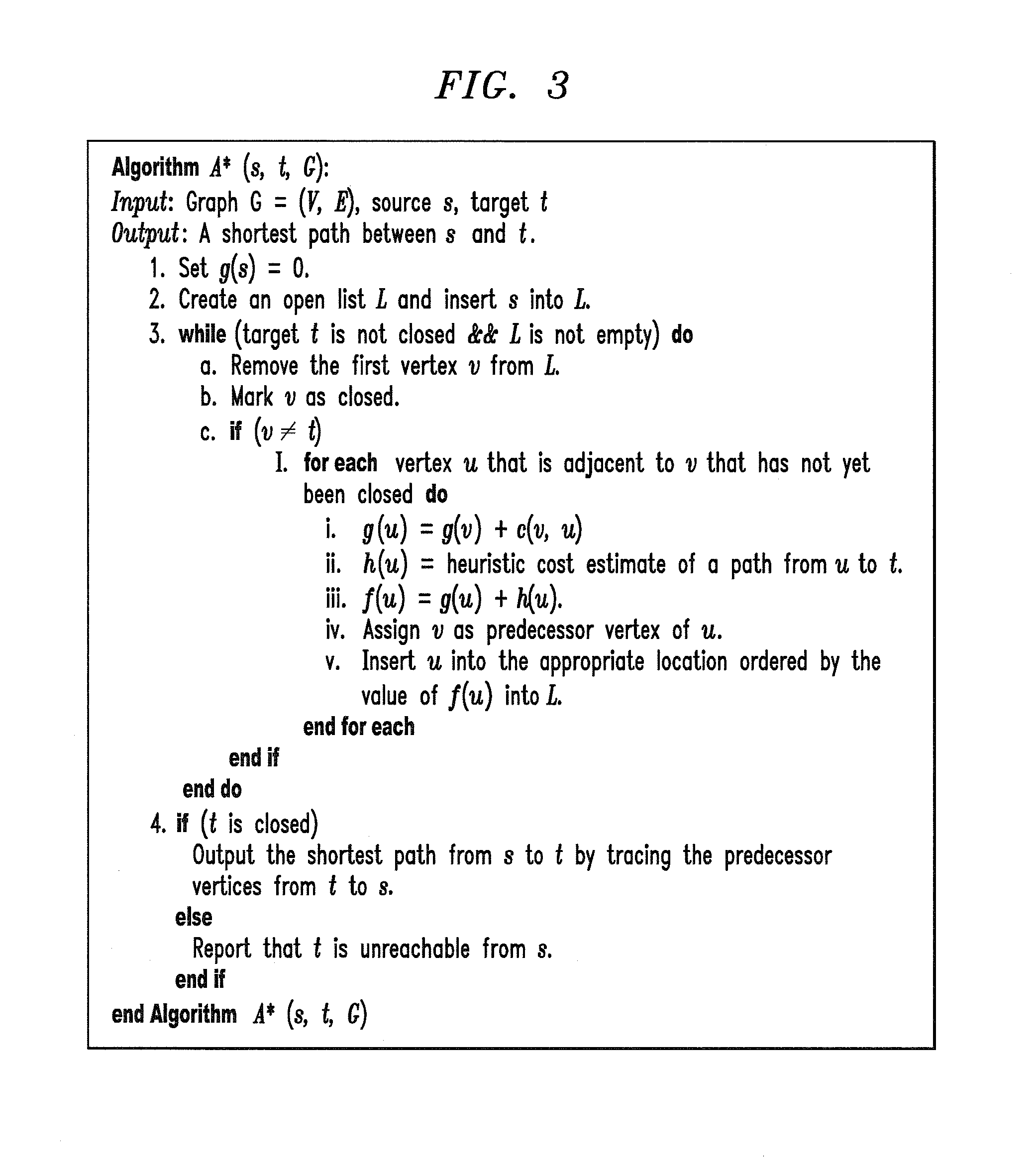Methods and Apparatus for Providing Flexible Timing-Driven Routing Trees
a timing-driven routing and tree technology, applied in electrical equipment, digital transmission, data switching networks, etc., can solve the problems of stressing rsrt algorithms to their limits, difficult algorithms for determining minimum-length steiner trees, falling into np-, etc., to achieve effective mechanisms and mitigate congestion
- Summary
- Abstract
- Description
- Claims
- Application Information
AI Technical Summary
Benefits of technology
Problems solved by technology
Method used
Image
Examples
Embodiment Construction
[0038]As will be illustrated in detail below, the present invention introduces techniques for providing flexible timing-driven routing trees having effective tradeoffs between wire length and timing.
[0039]Referring initially to FIG. 1, a graph illustrates the placement of a set of terminals, according to an embodiment of the present invention. The source, or net driver, in this embodiment is connected to eight sinks. One of the eight sinks is a critical sink and is illustrated as a triangle, while the remaining non-critical sinks are illustrated as filled circles. Steiner nodes are illustrated as unfilled circles, and interconnect wires are illustrated as line segments.
[0040]A possible timing optimized route for the circuit of FIG. 1 is illustrated in FIG. 2, according to an embodiment of the present invention. In this embodiment, the path from the source to the critical sink is isolated from the rest of the net so that its distributed RC delay is minimized. Paths such as the one il...
PUM
 Login to View More
Login to View More Abstract
Description
Claims
Application Information
 Login to View More
Login to View More - R&D
- Intellectual Property
- Life Sciences
- Materials
- Tech Scout
- Unparalleled Data Quality
- Higher Quality Content
- 60% Fewer Hallucinations
Browse by: Latest US Patents, China's latest patents, Technical Efficacy Thesaurus, Application Domain, Technology Topic, Popular Technical Reports.
© 2025 PatSnap. All rights reserved.Legal|Privacy policy|Modern Slavery Act Transparency Statement|Sitemap|About US| Contact US: help@patsnap.com



